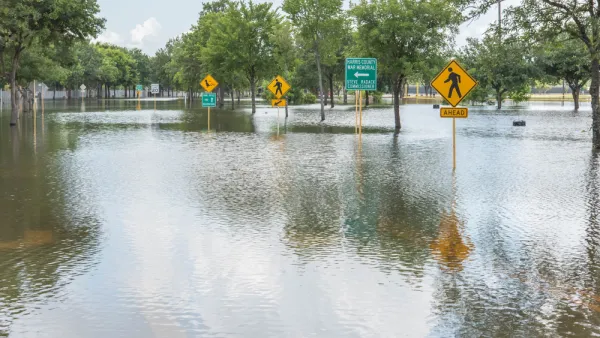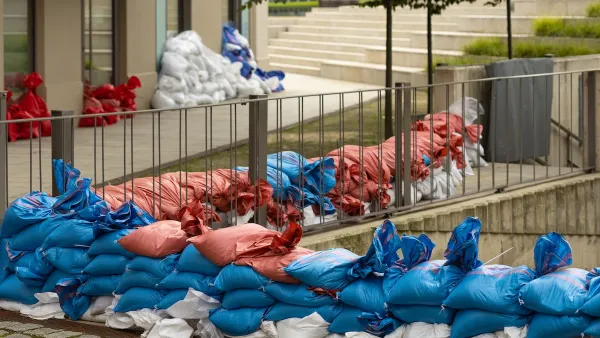Houston's director of Transportation and Drainage Operations wants to see more sustainable development in the city that has historically depended on freeways as its critical infrastructure.

Earlier this year, Houston experienced "one of the worst natural disasters in Texas history as a severe winter storm crippled infrastructure across the state." Veronica O. Davis, the city's new Director of Transportation and Drainage Operations, writes that the city "finds itself at a critical point."
Houston ranks as "one of the nation’s most unsafe for pedestrians and there is a wide gap between neighborhoods’ access to resources," says Davis. "For decades, federal transportation policy has added to these challenges by disproportionately encouraging and subsidizing the growth of one type of transportation infrastructure: highways, which receive 80 percent of federal transportation funding in the U.S." But there is another way. "By offering many ways to get around, we can help reconnect divided neighborhoods, provide more access to opportunity for all Houstonians, lessen racial inequities, and, with less concrete, have our neighborhoods flood less often." Davis says the city is making progress. "With the Resilient Houston plan, we are investing in drainage and green infrastructure to manage stormwater from major and minor storms. And under Mayor Sylvester Turner’s Complete Communities initiative, we are investing in Houston’s under-resourced neighborhoods — right-sizing roads to make them safer for people walking and biking, and working to reduce flooding."
But according to Davis, the city needs help from the federal government. Pointing to a proposal included in the House reconciliation package which includes $10 billion in funding for buses in underserved neighborhoods and "$4 billion to repair the historic damage to Black and low-income neighborhoods caused by highways that intentionally destroyed thriving places and widened segregation," Davis says "these targeted measures could be transformative, tying funding directly to goals, and giving local governments a greater say in what will most benefit their neighborhoods." To make progress on climate change and create a greener, more equitable city, "we must focus on transportation. We must take new approaches." The federal dollars could be a huge step in that direction.
FULL STORY: Opinion: Infrastructure can pave the way to a greener, fairer Houston

National Parks Layoffs Will Cause Communities to Lose Billions
Thousands of essential park workers were laid off this week, just before the busy spring break season.

Retro-silient?: America’s First “Eco-burb,” The Woodlands Turns 50
A master-planned community north of Houston offers lessons on green infrastructure and resilient design, but falls short of its founder’s lofty affordability and walkability goals.

Delivering for America Plan Will Downgrade Mail Service in at Least 49.5 Percent of Zip Codes
Republican and Democrat lawmakers criticize the plan for its disproportionate negative impact on rural communities.

Test News Post 1
This is a summary

Test News Headline 46
Test for the image on the front page.

Balancing Bombs and Butterflies: How the National Guard Protects a Rare Species
The National Guard at Fort Indiantown Gap uses GIS technology and land management strategies to balance military training with conservation efforts, ensuring the survival of the rare eastern regal fritillary butterfly.
Urban Design for Planners 1: Software Tools
This six-course series explores essential urban design concepts using open source software and equips planners with the tools they need to participate fully in the urban design process.
Planning for Universal Design
Learn the tools for implementing Universal Design in planning regulations.
EMC Planning Group, Inc.
Planetizen
Planetizen
Mpact (formerly Rail~Volution)
Great Falls Development Authority, Inc.
HUDs Office of Policy Development and Research
NYU Wagner Graduate School of Public Service




























